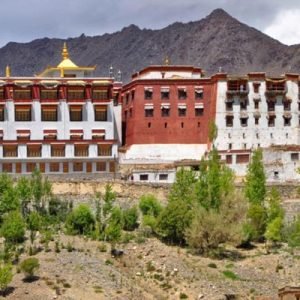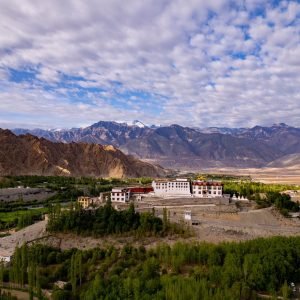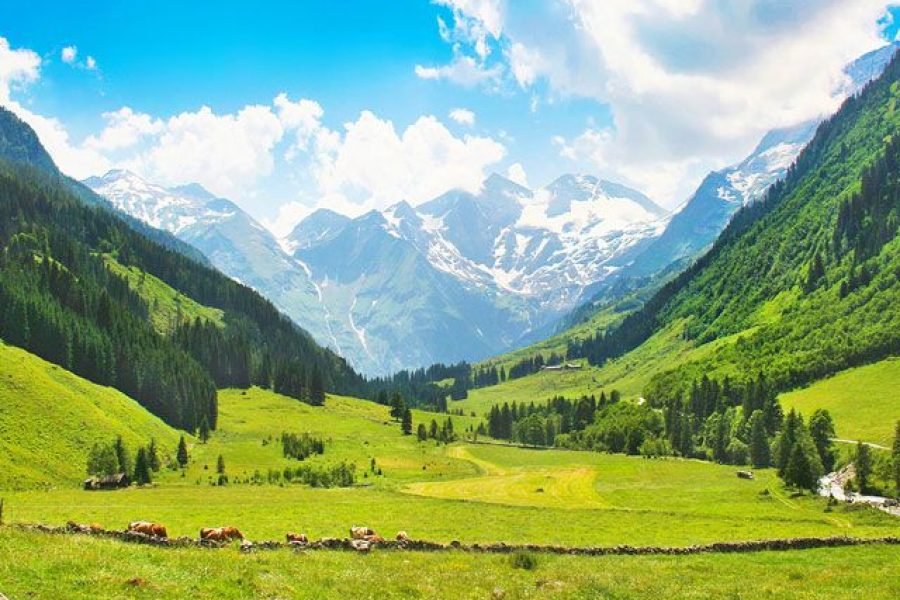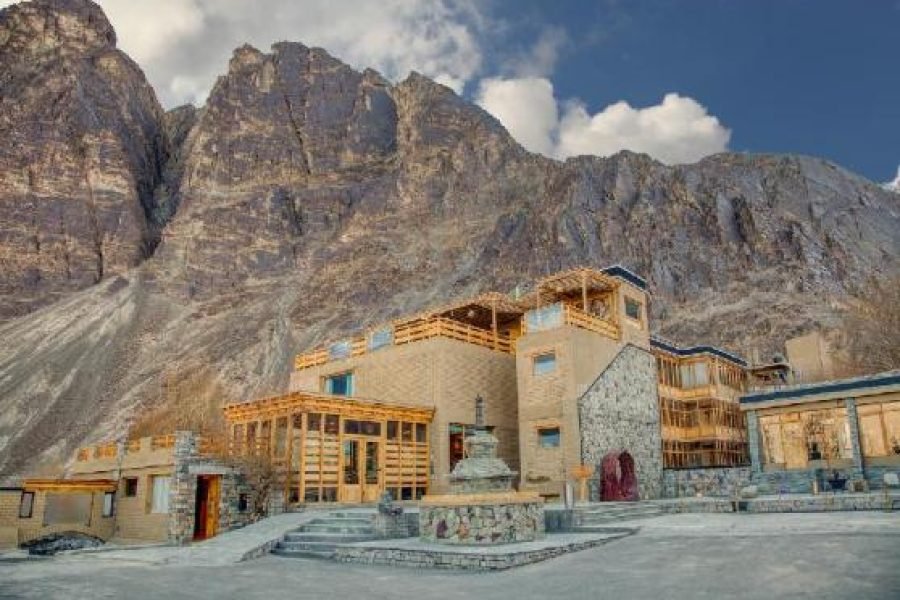Phyang Monastery : Sacred Views, Timeless Peace





Table of Contents
TogglePhyang Monastery, located within the breathtaking region of Ladakh in India, is one of the most culturally significant as well as visually striking monasteries in the Himalayan region. Generally considered less mainstream than the famous Hemis or Thiksey monasteries, Phyang provides for a quieter, more intimate atmosphere that immerses visitors deep into the spiritual heart of Ladakh’s Buddhist traditions. With its incredible architecture, historical importance, and scenic beauty, Phyang Monastery has a special place in the hearts of travelers, historians, and spiritual seekers alike.
In this blog, we’ll take a deep dive into the history, architecture, and significance of Phyang Monastery, exploring its role in preserving the rich cultural heritage of Ladakh while offering visitors a peaceful sanctuary in the heart of the Himalayas.
Introduction to Phyang Monastery: A Gem of Ladakh
Situated approximately 17 kilometers west of Leh, the capital of Ladakh, in the Indian Himalayan region, amidst rugged landscapes, is the Phyang Monastery. The monastery stands on top of a hill and has an excellent view of the surrounding valleys. This iconic place represents Ladakhi Buddhist culture, which adds to the richness of religious and architectural features of Ladakh. The serene surroundings and the dramatic landscape make it an absolute must-visit destination.
Founded in the 16th century by Chosje Danma, a disciple of the famous Tibetan scholar and saint Tsongkhapa, Phyang Monastery is one of the most important centers of the Gelugpa school of Tibetan Buddhism. The Gelugpa school, also known as the “Yellow Hat” sect, has played a crucial role in shaping the spiritual landscape of Tibet and Ladakh. Phyang Monastery is known not only for its spiritual role but also for the distinct architecture that exudes Tibetan Buddhist aesthetics combined with unique Ladakhi culture characteristics.
Ancient Import and Background of Phyang Monastery
Phyang Monastery was founded as an institute for learning and teaching, meditation, and religious practice. Its historical importance is the role it played in the preservation of the Gelugpa tradition in Ladakh, especially during a period when the region was experiencing political and social changes. Over the centuries, the monastery has been a beacon of spiritual guidance, attracting monks and pilgrims from all over the region. It has been a place for the study of Buddhist philosophy, Tibetan language, and rituals, ensuring that the ancient teachings of Buddhism are passed down from generation to generation.
One of the most remarkable histories about Phyang Monastery is how it has been associated with the Ladakh kings. The monastery has been linked to aristocracy for a long time, but the region’s kings’ patronage helped it progress well. The monastery was, at the same time, considered an institution where monks gained education in religious arts such as thangka painting, scriptorial studies, and meditation techniques.
This is an important spiritual site but also cultural in significance because it has played host to a myriad of religious festivals. They are all essential parts of Ladakhi life, celebrating deities of the Buddhist religion as well as seasonal changes, giving rare glimpses into Ladakhi traditions and customs.
Architecture of Phyang Monastery: Tibetan-Ladakhi
Phyang Monastery is a fantastic architectural wonder, which is a culmination of the best Tibetan and Ladakhi design elements. It was built in the traditional style of Tibet, with a succession of whitewashed structures and multi-storied buildings placed in a compact arrangement. The hilltop location also serves to enhance the drama in the architecture, where spires of the monastery dominate the rugged Himalayan scenery with ornate windows.
The monastery is composed of several buildings such as temples, prayer halls, and living quarters for the monks. The main structure of Phyang Monastery is the main assembly hall or “Dukhang,” in which religious ceremonies and prayers are performed. Within the Dukhang, visitors will find beautiful murals portraying different Buddhist deities and intricately designed wooden pillars that enhance the overall beauty of the place. The walls of the Dukhang host colorful thangka paintings that portray the Buddha’s life, significant events in Buddhist history, and a myriad of other spiritual themes.
Among its more unique architectural features, Ladakhi elements are used in Phyang Monastery. Unlike many monasteries in Tibet, these are designed to focus on the aesthetics of Tibetan architecture; instead, Phyang uses some of the Ladakhi domestic architecture, such as flat roofs, wide windows, and thick stone walls, making it look more earthy and grounded in harmony with the natural environment.
Another important architectural feature is the presence of several small stupas (reliquaries) and prayer wheels. They are used by the monks and pilgrims to go about their daily prayers and rituals. The prayer wheels themselves are an iconic feature of Ladakhi Buddhist culture, and turning them is believed to bring merit and blessings.
Religious Practices and Festivals at Phyang Monastery
Phyang Monastery is active worshipping place, and one can perceive a daily religious practice that is always behind the back of people involved in Buddhism. As indicated earlier, monks at this Phyang monastery carry out such a variety of spiritual deeds; they meditate, utter prayer, and repeat mantras for their benefit. Still more monks here are those pursuing Buddhist text study work while some others might often browse through ancient books in Phyang monastery library.
The most important celebration at Phyang Monastery is the annual Phyang Tsechu festival, which is a colorful and vibrant expression of Ladakhi culture and Buddhist traditions. Held every year in the month of August, the festival attracts thousands of pilgrims and tourists from all over the world. During the Phyang Tsechu, the monks perform traditional dances known as “Cham dances,” which depict various Buddhist deities and legends. The Cham dances are accompanied by the playing of traditional instruments, such as drums and trumpets, creating a mesmerizing and spiritual atmosphere.
It organizes not only the Phyang Tsechu but also hosts other religious ceremonies, such as prayers for people’s and the whole world’s welfare as well as rituals over the important Buddhist holidays. These celebrations give visitors a unique opportunity to experience the living traditions of Ladakh’s Buddhist community.
Role of Phyang Monastery in Preserving Culture of Ladakh
Monastery of Phyang plays an important role in safeguarding the rich cultural heritage of Ladakh. It is not just a center of religious activity but also an ancient library holding knowledge, art, and tradition. The treasure trove of thangkas, the scripture, and relics of ancient scriptures is a testament to living Ladakhi Buddhist tradition, many of which had been passed from generation to generation.
The monastery also plays a key role in education, providing spiritual and philosophical training to young monks. In Ladakh, where education is often limited in rural areas, Phyang Monastery offers a vital opportunity for young men to study Buddhist philosophy, Tibetan language, and other academic subjects. The monastery’s educational programs are not only focused on religious teachings but also on the development of critical thinking, discipline, and a deep respect for nature and the environment.
Beyond its religious and educational functions, Phyang Monastery also engages in community service. Monks in the monastery often engage themselves in charity works, which include offering food, medical aid, and support to the local communities. This helps in cementing the relationships between the monastery and the people of Ladakh.
Visiting Phyang Monastery: A Spiritual Journey
Phyang Monastery is an abode for peace from the restlessness of modern life for any visitor. The tranquility surrounding the monastery and its spiritual atmosphere create a serene atmosphere that cannot be found in most parts of the world. Whether a pilgrim looking for solace or a traveler wanting to discover the cultural heart of Ladakh, Phyang Monastery offers a perfect haven.
This is open all year round; the summer season (from May to September) being the best time to visit because the weather is excellent and coincides with the date of the Phyang Tsechu festival. Visitors are free to explore the various temples and prayer halls within the monastic compound, meet and engage the monks, or participate in the religious ceremony if possible. The site allows visitors to trek to areas within its vicinity and offer splendid views of the Indus River as well as that of the Stok Range.
Phyang Monastery is also a very good place from which to go and see more of Ladakh. Since it is placed in the center, traveling to the other significant monasteries, like Thiksey, Hemis, and Lamayuru, or even Leh Palace, Nubra Valley, or Pangong Lake is very accessible.
Conclusion: Timeless Allure of Phyang Monastery
Phyang Monastery is a great testimony to the rich spiritual and cultural heritage of Ladakh. Its history, architecture, and religious significance make it one of the most important monasteries in the region. For those seeking deeper understanding of Ladakhi Buddhist traditions and a quiet place to reflect and meditate, Phyang Monastery offers a rare opportunity to connect with the soul of this ancient land.
The monastery’s peaceful environment, rich history, and beautiful architecture make it a must-visit destination for anyone traveling to Ladakh. Whether you are drawn to its spiritual significance, its stunning architecture, or its cultural heritage, Phyang Monastery is a place that will leave a lasting impression on your heart and mind. In a world where the modern and the traditional often clash, Phyang stands as a living bridge to a simpler, more contemplative way of life—one that honors the past while looking toward a brighter, more harmonious future.
FAQ's
1. What is Phyang Monastery?
Phyang Monastery is a Buddhist monastery located in the Ladakh region of India. It is one of the most prominent monasteries in the region and belongs to the Gelugpa school of Tibetan Buddhism. Founded in the 16th century, it is known for its rich cultural heritage, stunning architecture, and spiritual significance.
2. Where is Phyang Monastery located?
Phyang Monastery is located about 17 kilometers west of Leh, the capital of Ladakh. It is perched on a hilltop with panoramic views of the surrounding valleys and is easily accessible from Leh by road.
3. What is the history of Phyang Monastery?
Phyang Monastery was established in the 16th century by Chosje Danma, a disciple of the Tibetan scholar Tsongkhapa. It is an important center for the Gelugpa school of Tibetan Buddhism and has played a key role in preserving Buddhist teachings in Ladakh.
4. What is the significance of Phyang Monastery in Ladakh?
Phyang Monastery is significant in Ladakh for its religious and cultural importance. It serves as a spiritual center for Buddhists, preserving Ladakhi Buddhist traditions, rituals, and teachings. The monastery also hosts annual festivals, including the Phyang Tsechu, that celebrate Ladakhi culture and Buddhist practices.
5. How do I reach Phyang Monastery?
Phyang Monastery is located around 17 kilometers from Leh. Visitors can take a taxi or drive to the monastery. The road to the monastery is well-connected, and it can be easily reached in under an hour from Leh.
6. What is the Phyang Tsechu festival?
The Phyang Tsechu is an annual religious festival held at Phyang Monastery, usually in August. It features vibrant Cham dances performed by monks, depicting Buddhist deities and legends. Pilgrims and tourists from around the world attend the festival, making it a major cultural event in Ladakh.
7. What are the main attractions of Phyang Monastery?
The main attractions of Phyang Monastery include its stunning architecture, beautiful murals, thangka paintings, and the spiritual practices of the monks. Visitors can also enjoy breathtaking views of the surrounding mountains and valleys from the monastery’s hilltop location.
8. What is the architecture of Phyang Monastery like?
Phyang Monastery features traditional Tibetan architecture with elements of Ladakhi style. The monastery has whitewashed buildings, prayer halls, a central Dukhang (assembly hall), and intricate murals and thangka paintings. It also has stupas and prayer wheels, which are integral to Buddhist rituals.
9. Can tourists visit Phyang Monastery?
Yes, tourists can visit Phyang Monastery. It is open to visitors throughout the year, with the best time to visit being during the summer months when the weather is pleasant and the Phyang Tsechu festival takes place.
10. What are the religious practices followed at Phyang Monastery?
At Phyang Monastery, the monks engage in daily prayers, meditation, and the recitation of mantras. Visitors can observe these religious practices and even participate in rituals like turning prayer wheels, which is believed to bring merit.
11. Is Phyang Monastery a good place for meditation?
Yes, Phyang Monastery is an ideal place for meditation due to its peaceful environment, spiritual atmosphere, and the practice of mindfulness by the resident monks. The serene surroundings make it a perfect retreat for those seeking spiritual solace.
12. What is the best time to visit Phyang Monastery?
The best time to visit Phyang Monastery is between May and September when the weather is warm and pleasant. It is also the time when the Phyang Tsechu festival is held, providing a unique cultural experience.
13. What are the nearby attractions to Phyang Monastery?
Nearby attractions include Leh Palace, Thiksey Monastery, Hemis Monastery, Pangong Lake, and Nubra Valley. These places are all within driving distance of Phyang Monastery and are must-see destinations for tourists in Ladakh.
14. What can visitors do at Phyang Monastery besides sightseeing?
Besides sightseeing, visitors can participate in religious ceremonies, engage in meditation, and observe the monks’ daily practices. Tourists can also explore the surrounding landscapes, trek nearby hills, or simply enjoy the tranquility of the monastery.
15. What is the role of Phyang Monastery in preserving Ladakhi culture?
Phyang Monastery plays a crucial role in preserving Ladakhi culture by hosting festivals, preserving ancient Buddhist texts and artworks, and serving as an educational center for young monks. It helps to maintain Ladakhi Buddhist traditions, language, and customs, contributing to the cultural heritage of the region.
How to book Tours for Ladakh with Charzan Holidays?
For a seamless and exceptional booking experience, contact Charzan Holidays at reservations@charzan.in or call us at +919622224473









0 Comment